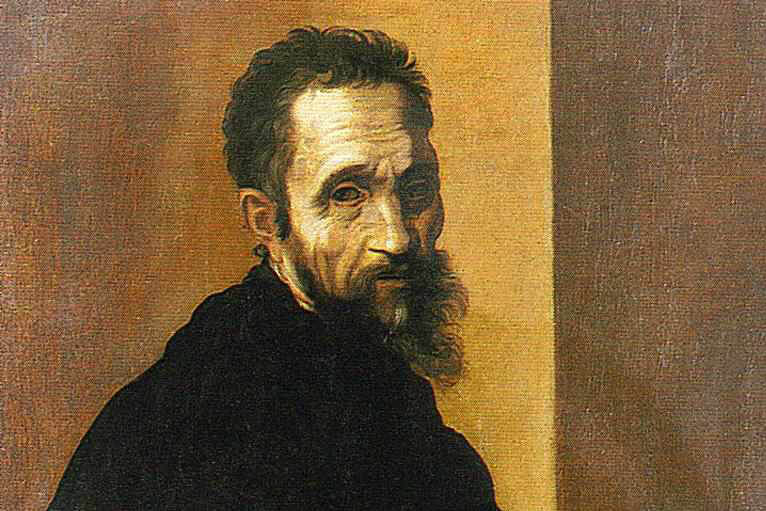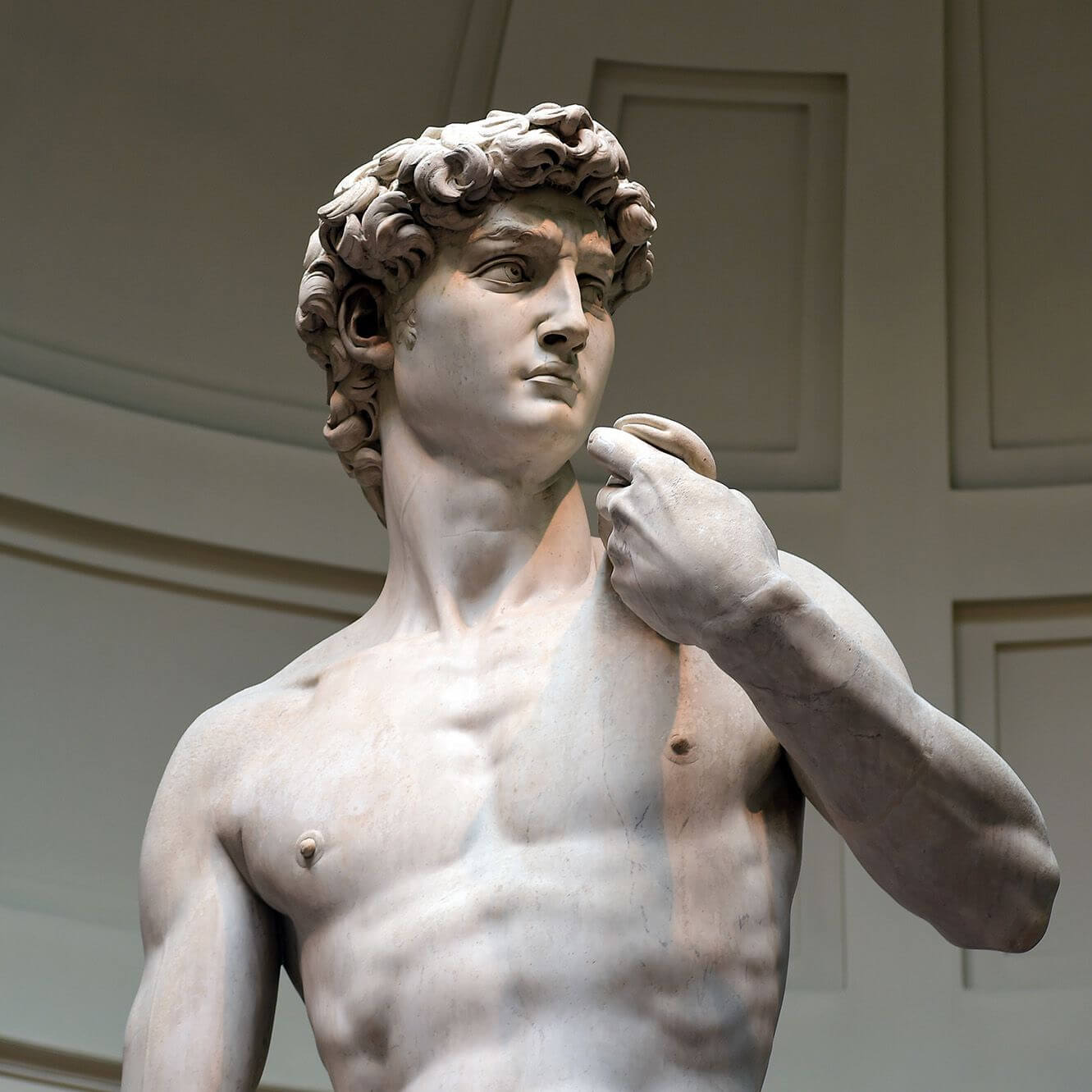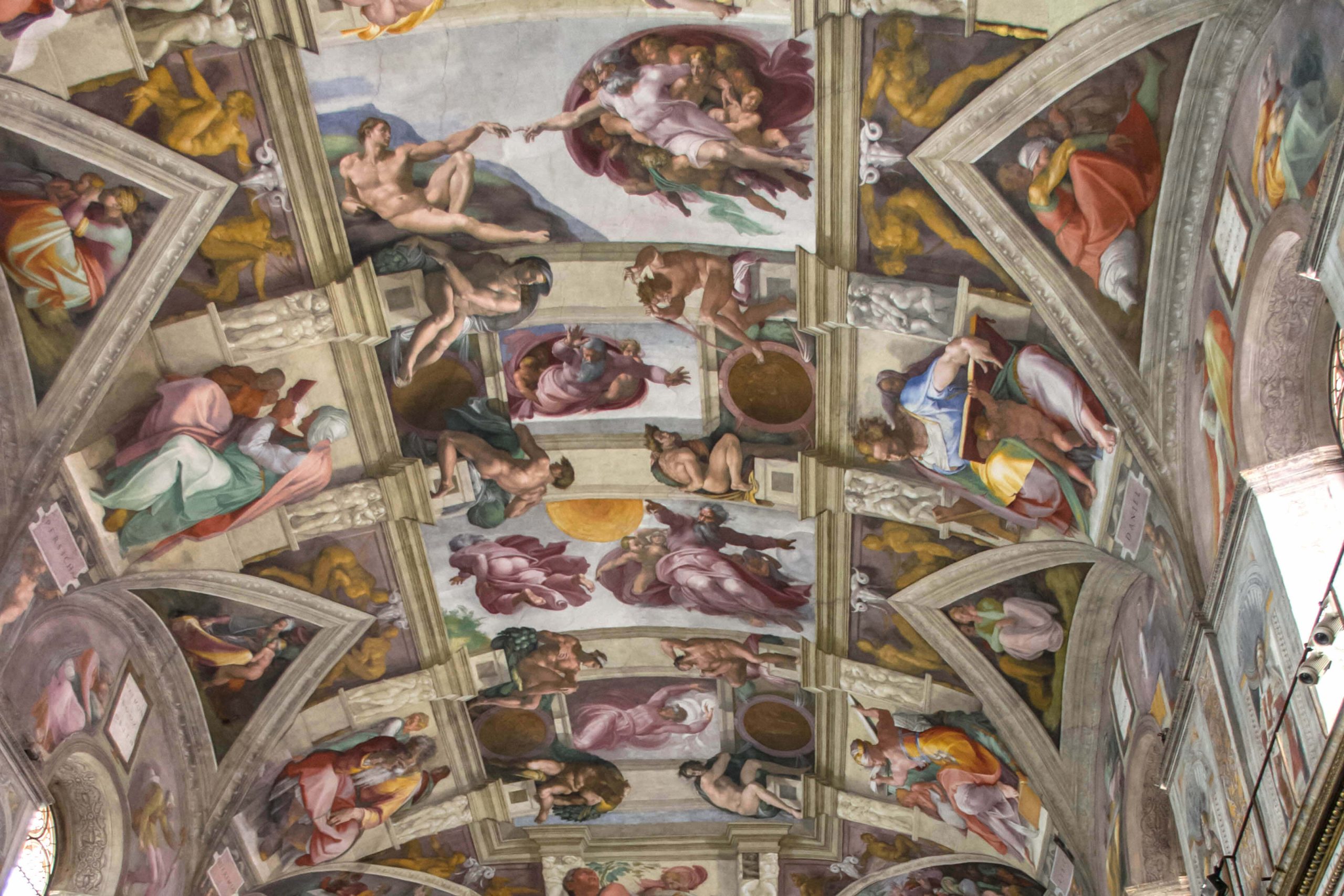Biography of Michelangelo
Michelangelo di Lodovico Buonarroti Simoni (1475-1564), is an Italian Renaissance artist, sculptors, architect, poet and engineer who exerted an unparalleled influence on the development of Western art.
His father worked for the government of Florence. After Michelangelo was born, his family moved to Florence – the city the artist always considered his real home.
Florence during the Renaissance was a vibrant center for the arts, a land of opportunity for Michelangelo’s innate talent to flourish. His mother died when he was 6, and his father initially disapproved of his son’s artistic career.
At the age of 13, Michelangelo was apprenticed to the painter Domenico Ghirlandaio – who is especially famous for his murals. A year later, his talent caught the attention of Lorenzo de’Medici, the patron of the arts of Florence. Lorenzo enjoyed the intellectual stimulation in the works of this gifted teenager. He invited Michelangelo to reside in his palatial home.
From there, Michelangelo learned many things. His later works were formed from what he had learned about philosophy and politics during his years living here. While living in the Medici, he also refined his technique under the tutelage of Bertoldo di Giovanni, a sculptor and custodian of Lorenzo’s collection of ancient Roman sculptures. Although Michelangelo displayed his genius in many fields, when it came to it, he always considered himself a sculptor first.
Some Famous Artworks Of Michelangelo
The Pietà and David
This is the work that paved the way for Michelangelo’s success and is also one of the two works that made his name (along with David). Carrara marble statue depicts the body of Jesus lying on the lap of Mary after being crucified. This work is considered to balance Renaissance ideals of classical beauty with naturalism.
In 1501, Michelangelo was once again asked to make another marble work to honor the city’s famous church, Duomo. The full name of this church is Santa Maria del Fiore. He chose to depict the biblical image of King David – a 17 feet tall statue that represents heroism, strength, and energy.
The statue, considered by scholars to be technically perfect, is kept at the Galleria dell’Accademia in Florence, and is considered a world’s famous symbol for the city.
Michelangelo and the Sistine Chapel Ceiling
In 1505, Pope Julius II commissioned Michelangelo to build the crypt. Michelangelo had to constantly stop work on the catacombs as the Pope became embroiled in military disputes and funds became scarce. Because of these interruptions, it took him 40 years to build the catacombs.
However, in 1508, Julius invited Michelangelo to return to Rome to carry out another invested art project – a depiction of the 12 apostles on the ceiling of the Sistine Chapel. This is the holiest part of the Vatican – where new Popes are elected.
Color throughout is calculated to enhance the total sense of structure. While the Ceiling is dominated by the soft gray and whitish tones of the stimulated marble and the gray-blue of the sky, it is punctuated by sharper accents of sometimes extremely vivid color.
Critics have suggested that Michelangelo’s depiction of the prophet Ezekiel as strong but anxious, determined but uncertain, is symbolic of Michelangelo’s sensitivity to the intrinsic complexity of man. Among the paintings on the ceiling, “God Created Adam” is the most famous one.
The last years of Michelangelo’s life
Michelangelo continued to sculpt and paint until the end of his life, although he worked on architectural projects increasingly in his older years. From 1520 to 1527, he designed the interior of the Medici Chapel in Florence, including the design of the walls, windows and roof.
Michelangelo also designed the dome of St Peter’s Basilica in Rome, although the work was completed after he passed away. His other masterpieces include the sculpture “Moses” (completed in 1515), the painting “The Last Judgment” (completed 1534) and other sculptures: Day, Night, Dawn and Dusk (completed 1533)…
From the 1530s, Michelangelo composed poetry, about 300 of which have survived to this day. Many of his works are associated with the philosophy of Neoplatonism – the human soul, supported by love, happiness, can reunite with God. This notion was the subject of intense discussion when he was a teenager living in Lorenzo de’Medici’s house.
Michelangelo passes away in 1564 at the age of 88 after an illness. He began sculpting The Pietà in the late 1540s, which was intended for his tomb, but remains unfinished. The work is now on display at the Museo dell’Opera Museo del Duomo, Florence – not far from where Michelangelo is buried at Basilica di Santa Croce.








